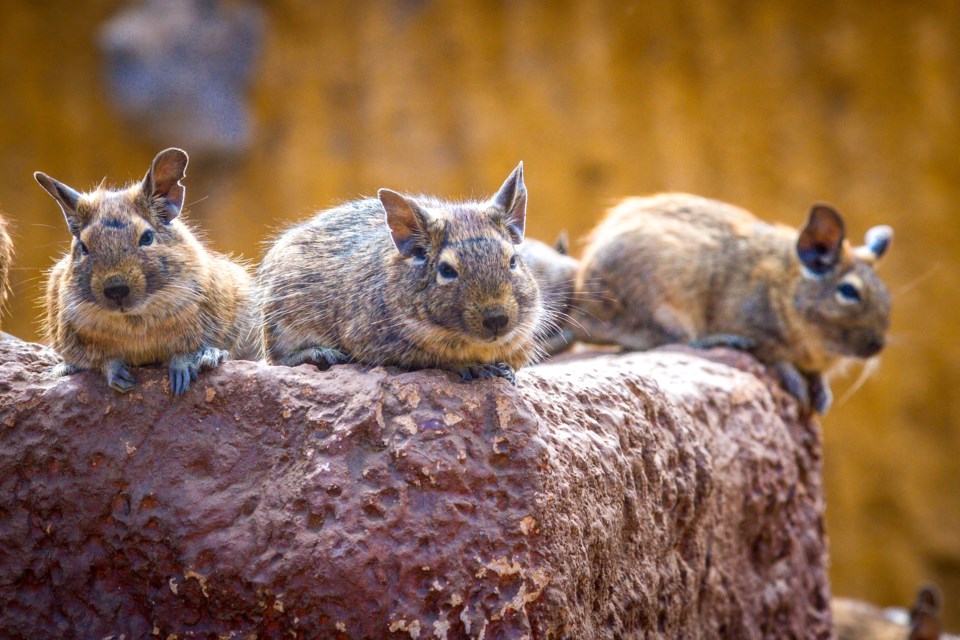All mammals that inhabit the earth today descended from one common ancestor called the Morganucodon—a tiny shrewlike creature that lived alongside the dinosaurs roughly 200 million years ago.
Competing for resources with the planet's early Jurassic reptilian giants kept the mammal lineages that existed around the same time relatively small—typically not much bigger than a house cat. Their small size also made them better adapted to surviving the cataclysmic asteroid that wiped out the dinosaurs. In the aftermath of the impact, with less competition for resources and predators to threaten their existence, mammals grew in size and diversity.
Exactly how the mammal class evolved and branched from Morganucodon into the more than 5,400 different species on Earth today—with the largest weighing more than 10 fully loaded school busses and the smallest weighing less than a nickel—is a complex and incomplete puzzle still being pieced together by scientists.
In the process of mapping our ultimate family tree, we have learned about many important evolutionary adaptations as well as traits so deeply embedded in mammalian DNA they're still widely exhibited in the class today, particularly small mammals most closely related to Morganucodon. Morganucodon and other concurrent mammals were likely nocturnal to avoid being seen by dinosaurs. The earliest mammals were also fossorial, or adapted to digging and burrowing, spending much of their time safely below ground.
A joint 2017 study from the University of London and Tel Aviv University's Steinhardt Museum of Natural History found that mammals only began emerging from the shadows of the night or the darkness of their burrows after the extinction of terrestrial dinosaurs 66 million years ago—relatively recently on the evolutionary timeline.
To better understand mammalian evolution, including common traits and points of divergence, Stacker compiled a list of 25 of the smallest mammals in the world using AnimalTraits as a reference. All mammals on the list have a mass under 1 pound (453 grams).
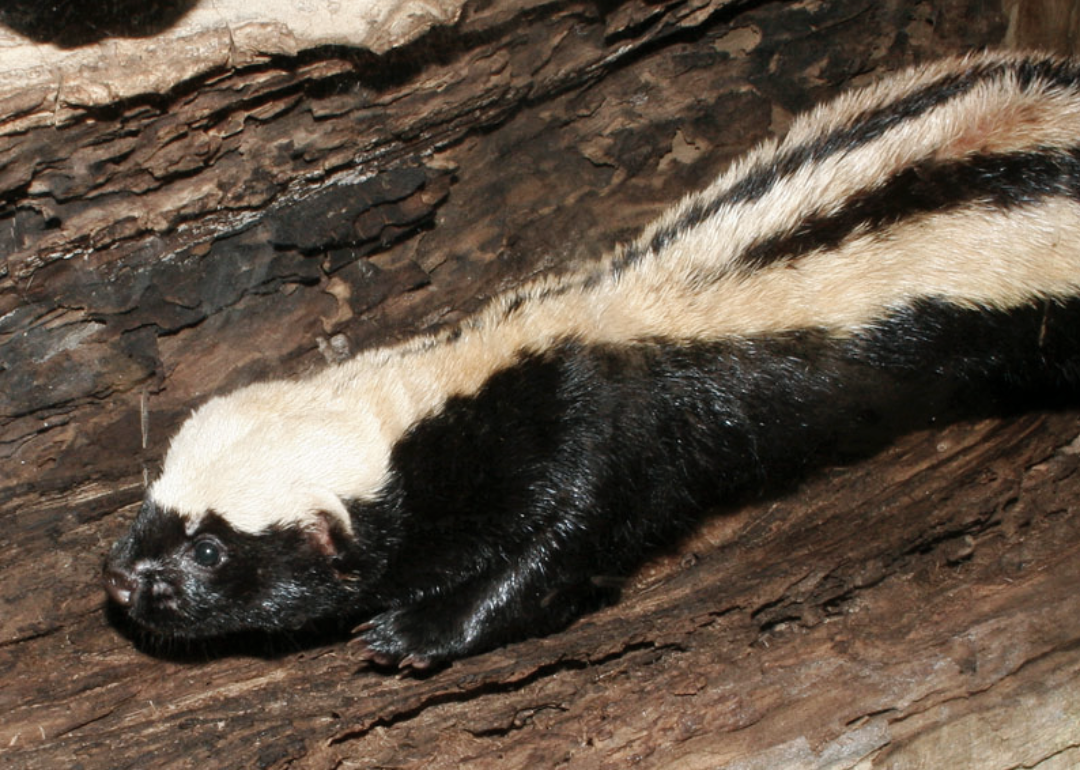
African striped weasel
- Scientific name: Poecilogale albinucha
- Mass: 340.0g
- Brain mass: 4.56g
- About as heavy as: 1 can of soup
The African striped weasel is endemic to sub-Saharan Africa. With its distinctive black-and-white or sometimes yellow stripes, it very closely resembles a skunk. They are nocturnal and fossorial. African striped weasels feed on rats, mice, springhares, and locusts, all of which threaten human crops.
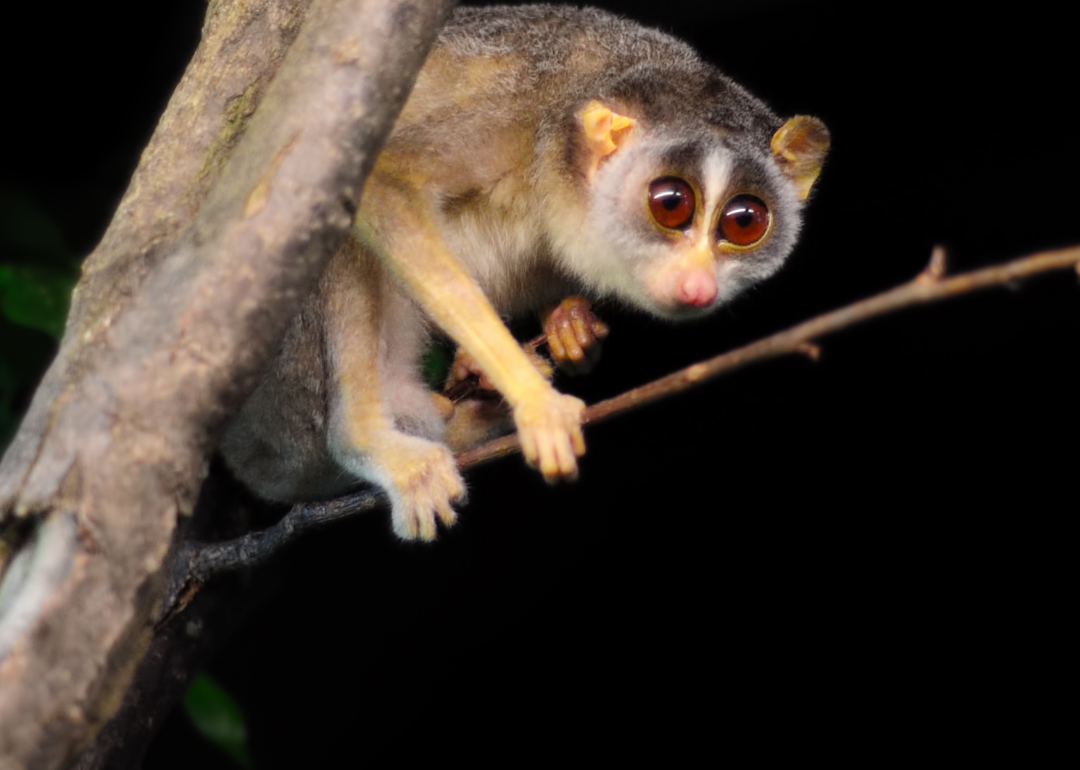
Red slender loris
- Scientific name: Loris tardigradus
- Mass: 322.0g
- Brain mass: 6.0g
- About as heavy as: 2 billiard balls
With its cartoonishly large eyes and slim limbs, the body of the red slender loris is well-adapted to a life spent mostly in the tree canopies, hunting insects under the cover of darkness. Like its close relative, the slow loris, the slender loris is part of the primate order. It is estimated that there are fewer than 2,500 slender lorises in the wild of Sri Lanka, where their population is restricted, as they face habitat loss and poaching. Some cultures incorrectly believe these animals hold medicinal and magical properties.
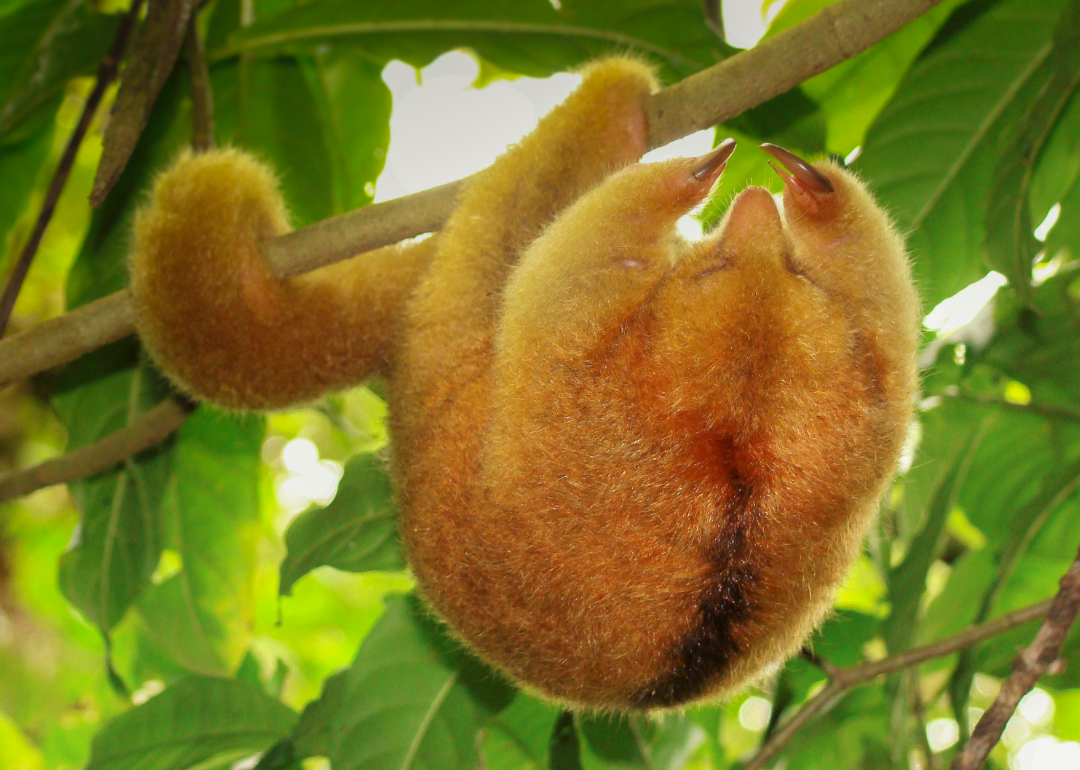
Silky anteater
- Scientific name: Cyclopes didactylus
- Mass: 240.0g
- Brain mass: Not available
- About as heavy as: 1 cup of water
The silky anteater is named for its resemblance to the seed pods, or more specifically the cottonlike fluff, inside the pods of the Ceiba tree it inhabits. It camouflages itself among the pods to avoid detection from predators such as large hawks, eagles, and owls. At night, it forages on ants and termites. The silky anteaters spend almost their entire lives in the trees, rarely touching the ground.
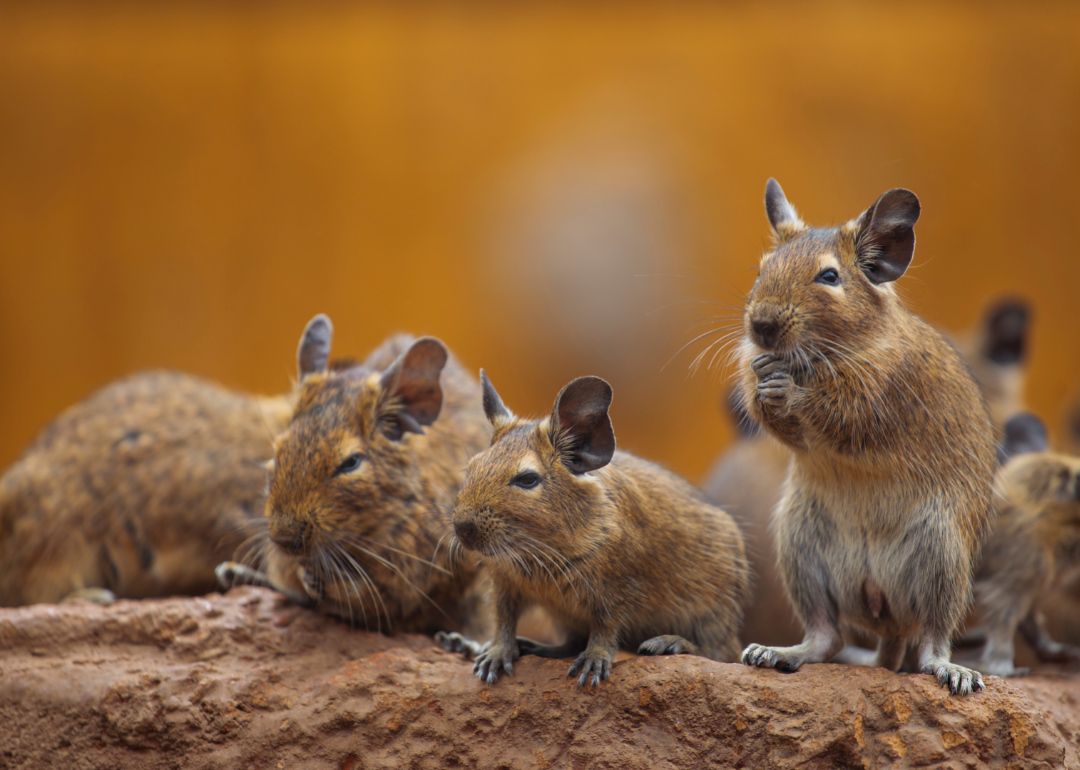
Degu
- Scientific name: Octodon degus
- Mass: 206.0g
- Brain mass: Not available
- About the weight of: 1 cup of sugar
The degu can be found among the Western slopes of the Andes Mountains in Chile, occupying a sweet spot between 28 and 35 degrees south latitude, where the climate is neither too arid nor too wet. While considered an agricultural pest in their native region, they are common in the international pet trade and are often used in laboratory studies, specifically research pertaining to diabetes, as the degu is intolerant of sugar.
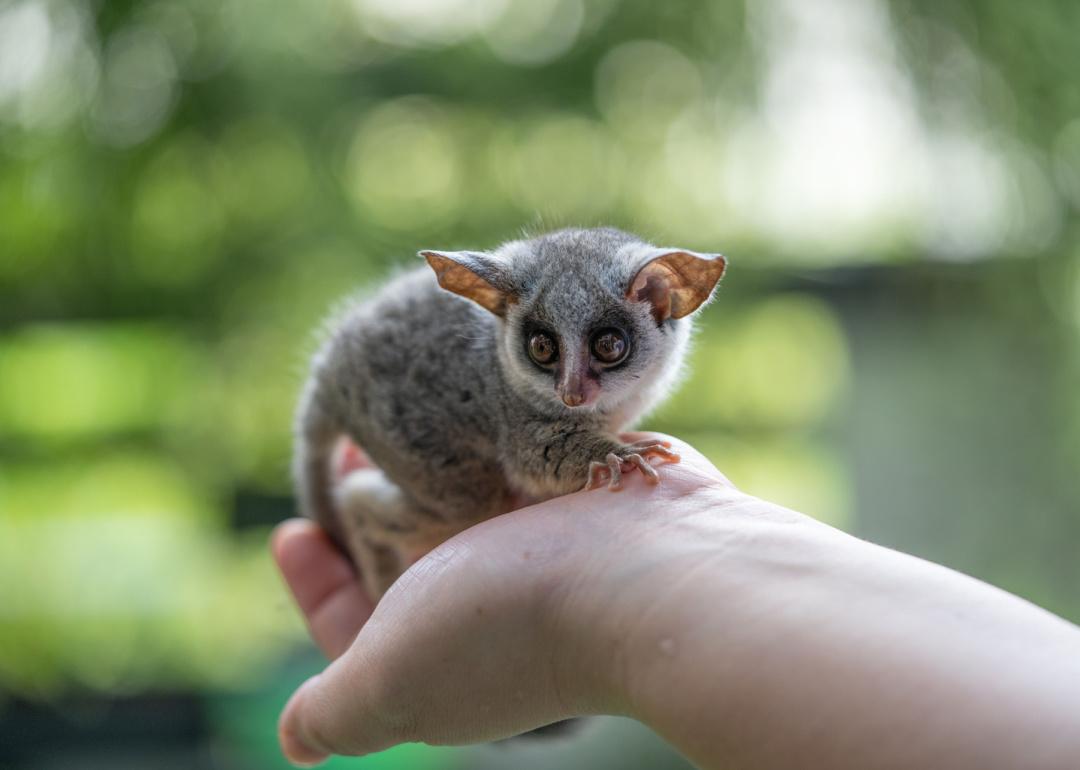
Senegal bushbaby
- Scientific name: Galago senegalensis
- Mass: 200.0g
- Brain mass: 5.0g
- About the weight of: 4 pieces of silverware
Found in forests and bush regions south of the Sahara, the Senegal bushbaby is nocturnal and arboreal. These agile tree-dwellers are adept at leaping great distances and getting around primarily by jumping from limb to limb. The Senegal bushbaby is not a threatened species.
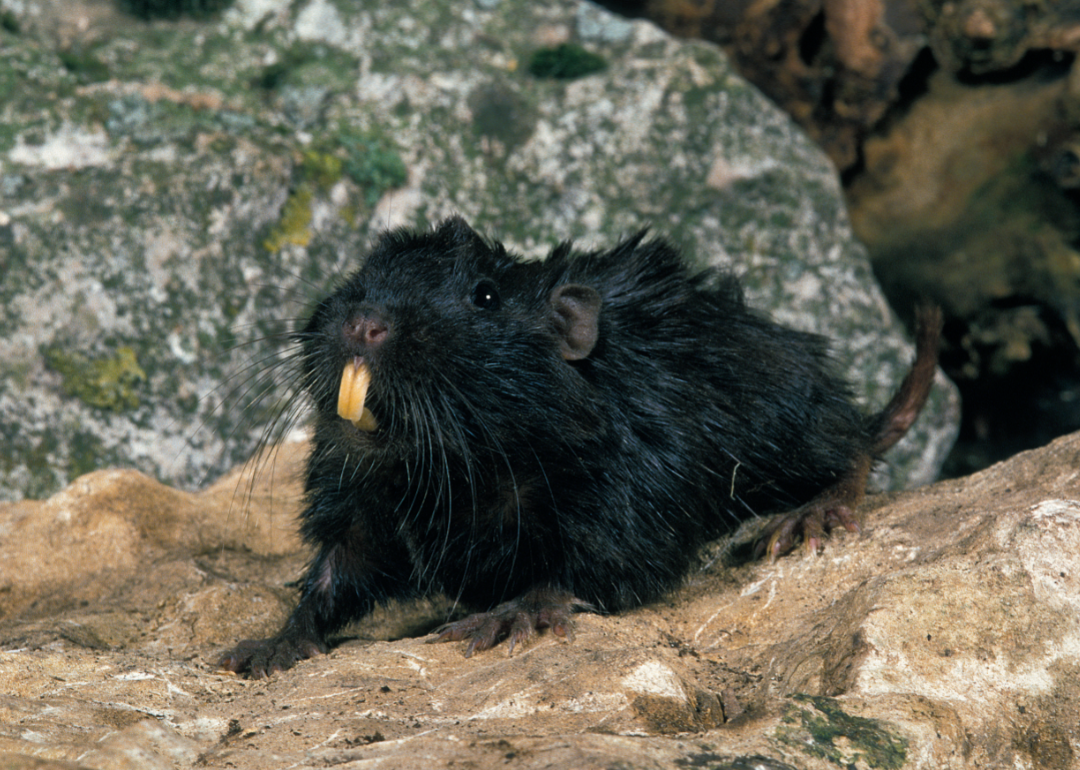
Coruro
- Scientific name: Spalacopus cyanus
- Mass: 185.0g
- Brain mass: Not available
- About the weight of: 2 full decks of cards
The fossorial coruro, endemic to Chile, is easily identified by its two incisors—giant relevant to its small size. Coruros provide an important service within their environment. According to one study, the presence of coruro burrows helps increase plant biomass by creating space and opportunities for new, healthy plant growth.
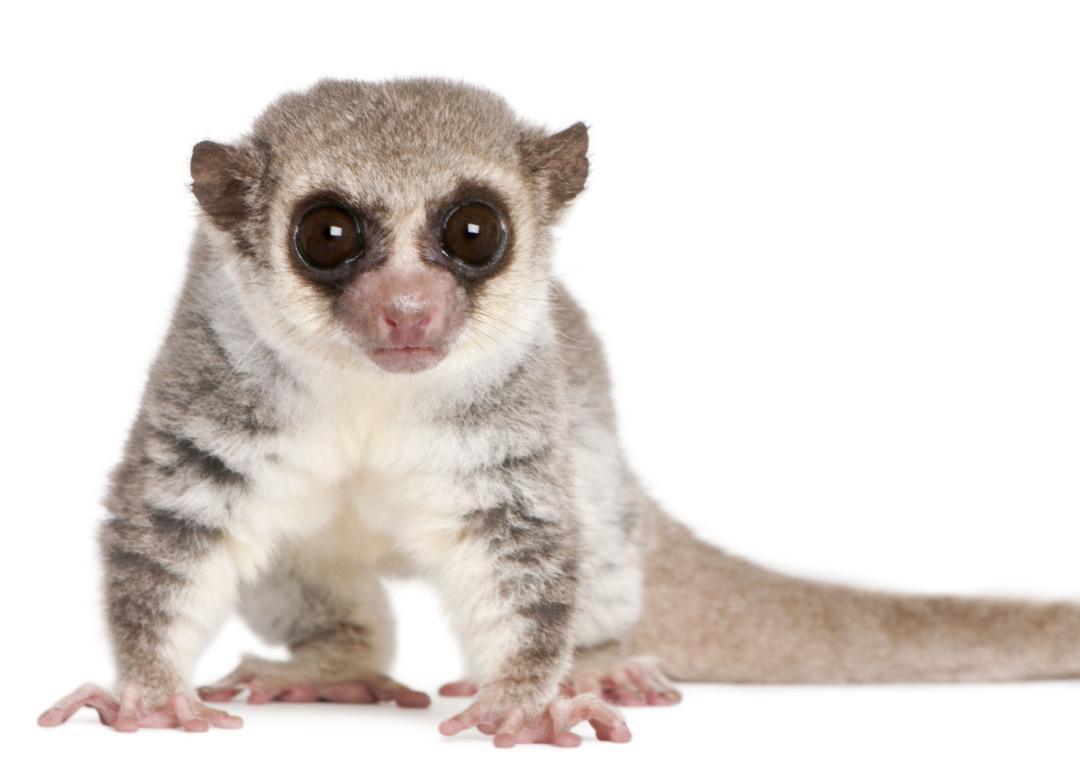
Lesser dwarf lemur
- Scientific name: Cheirogaleus medius
- Mass: 177.0g
- Brain mass: 3.14g
- About the weight of: 3 tennis balls
These nocturnal and arboreal primates are only found in the forests of western Madagascar. Sometimes referred to as fat-tailed dwarf lemurs, they become dormant during the winter, entering a hibernation-like state for up to six months, during which they nest in trees and survive off fat reserves in their tails until the next wet season.
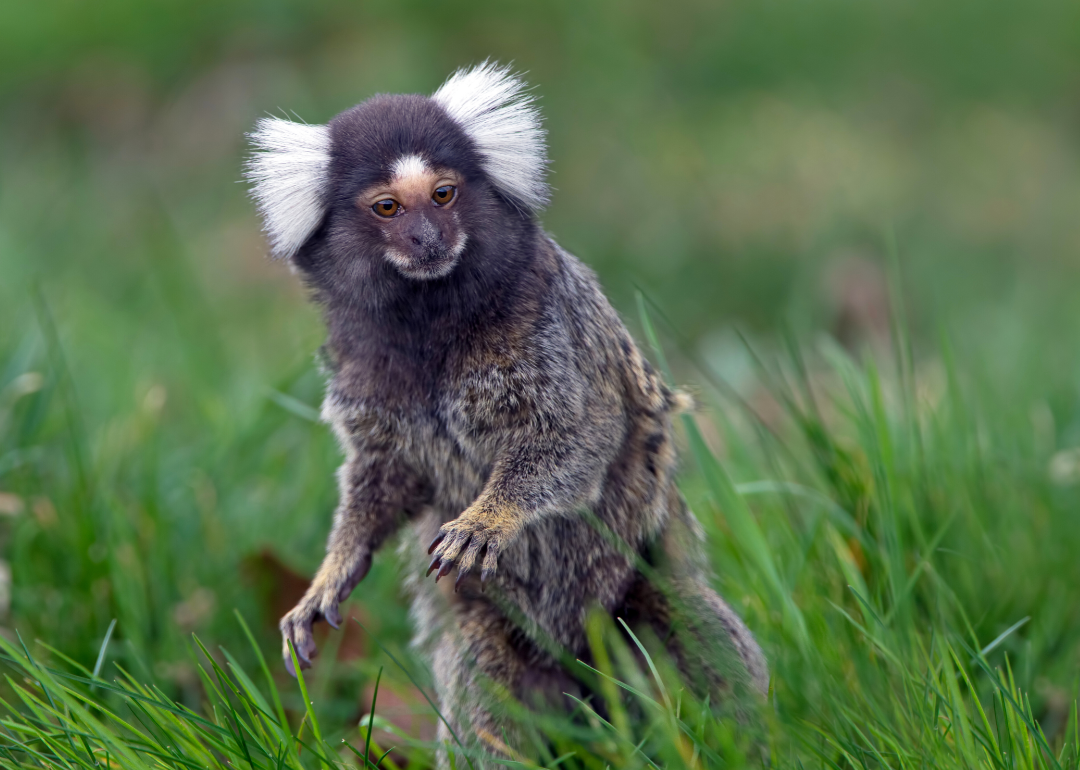
Common marmoset
- Scientific name: Callithrix jacchus
- Mass: 155.0g
- Brain mass: 7.30g
- About the weight of: 1 baseball
The common marmoset is easily identified by its angular white tufts of ear fur. In the wild, they are found in rain forests along Brazil's southeastern coast. A unique characteristic of the common marmoset is the species' reliance upon members of their family units other than mothers, such as males and siblings, to help rear infants. Wild marmoset populations are severely threatened by habitat loss.
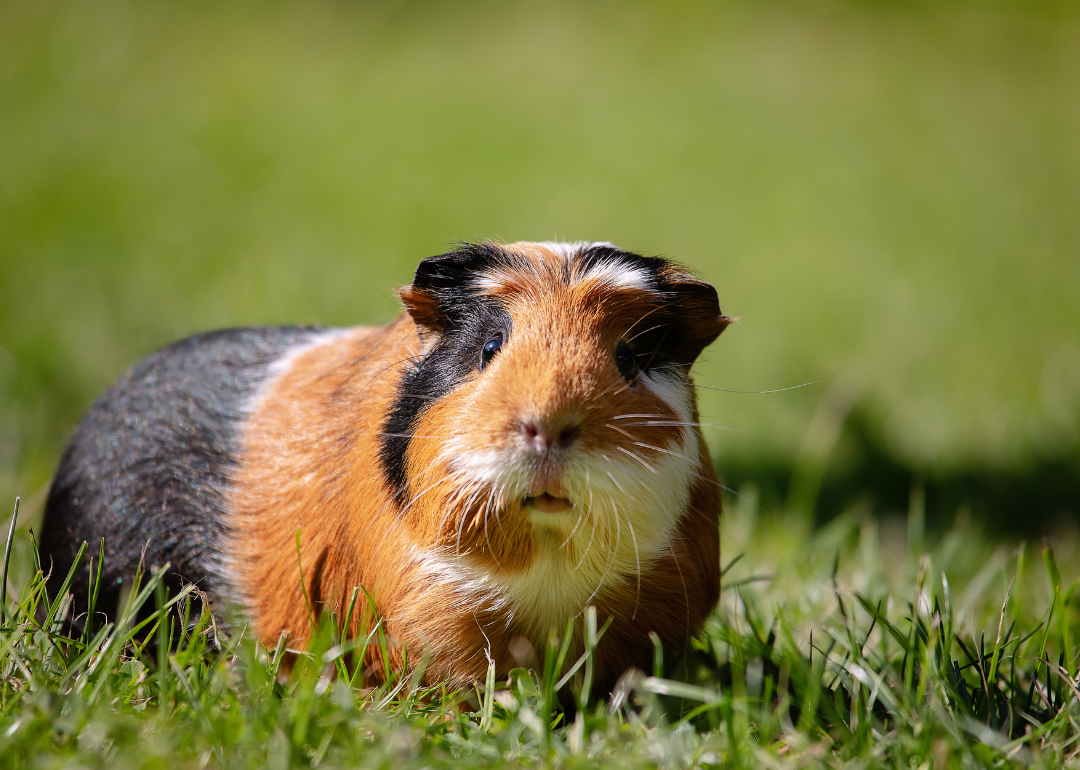
Domesticated guinea pig
- Scientific name: Cavia porcellus
- Mass: 106.50g
- Brain mass: 2.90g
- About the weight of: 1 medium tomato
If you've ever seen a guinea pig at a pet store and wondered where they come from, you're probably not alone. While guinea pigs are indigenous to South America, they no longer exist in the wild due to thousands of years of domestication. Fossil records indicate wild guinea pigs existed in South America as far back as 11,000 years ago. Domestication began roughly around 5,000 B.C.
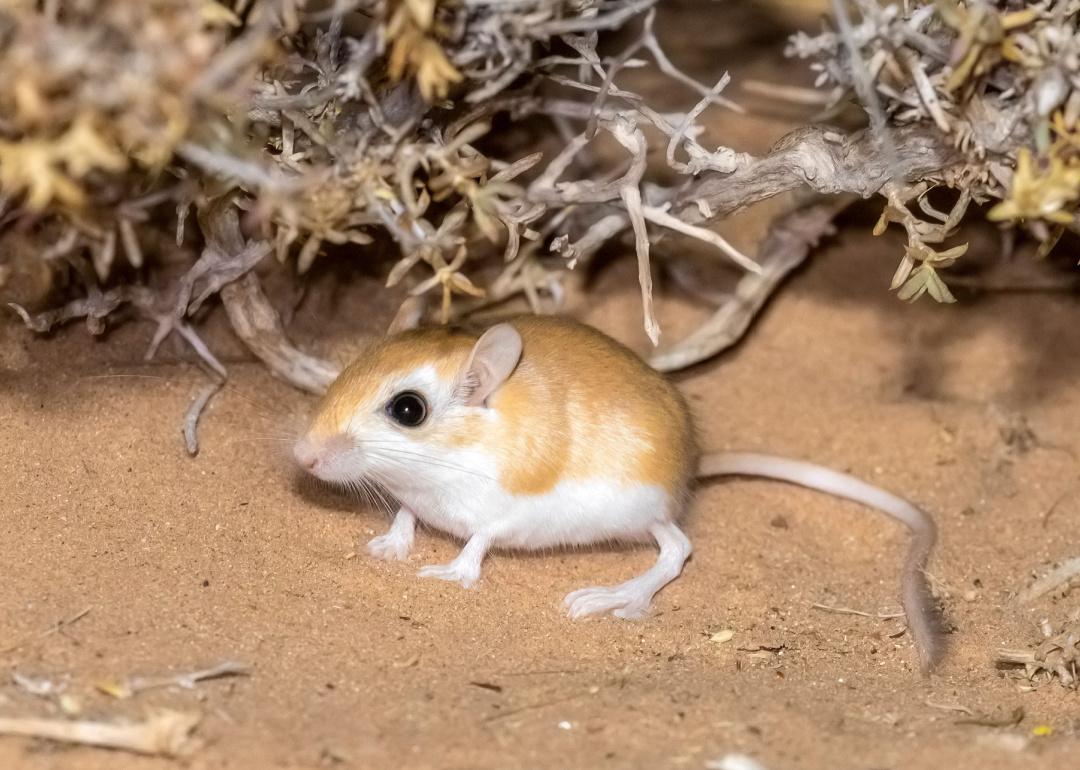
Lesser Egyptian gerbil
- Scientific name: Gerbillus gerbillus
- Mass: 95.0g
- Brain mass: 3.40g
- About the weight of: 1 deck of cards
The nocturnal and fossorial lesser Egyptian gerbil can be found throughout most of North Africa. It is considered a common species and, therefore, not under threat. This species is known for digging complex burrowing systems and frequently cohabitating with other gerbil species, including the greater Egyptian gerbil.
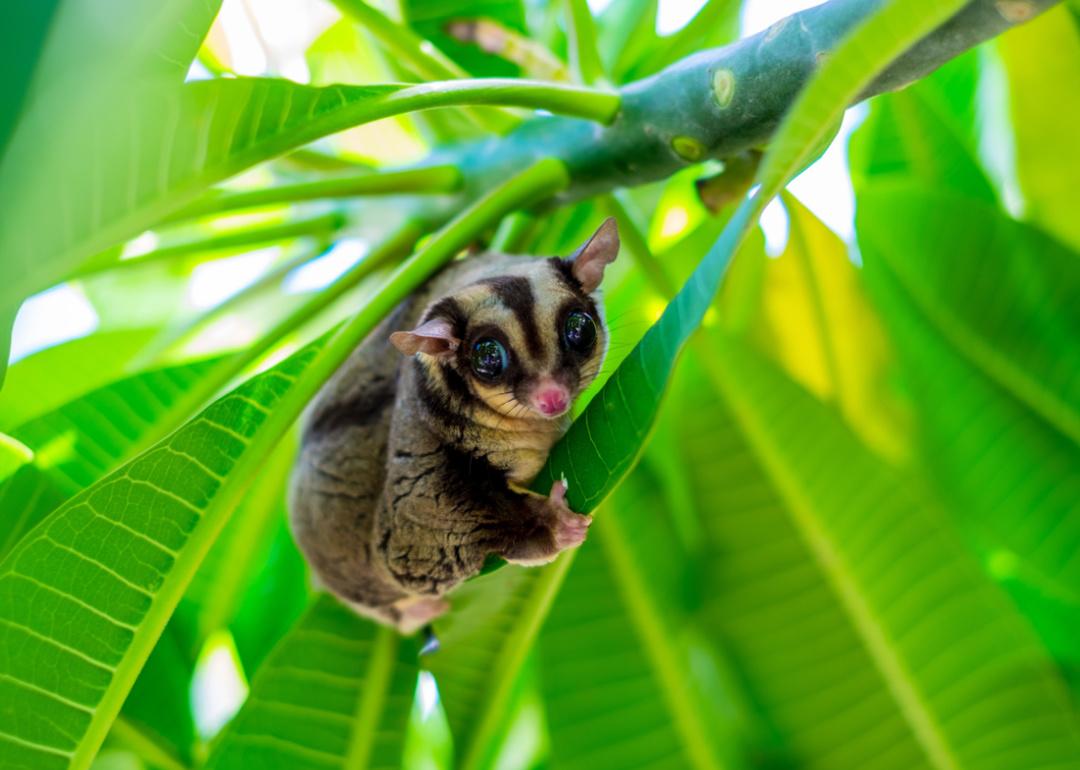
Sugar glider
- Scientific name: Petaurus breviceps
- Mass: 89.10g
- Brain mass: 2.17g
- About the weight of: 1 full spice jar
Sugar gliders are tree-dwelling marsupials found throughout the forests of Australia and New Guinea. The species is known for its ability to soar great distances—up to the length of a football field— using a parachute-like membrane attached to its wrists and ankles. While it may be cute, it's a very effective predator whose appetite for swift parrot nestlings has threatened the bird's survival in certain regions.
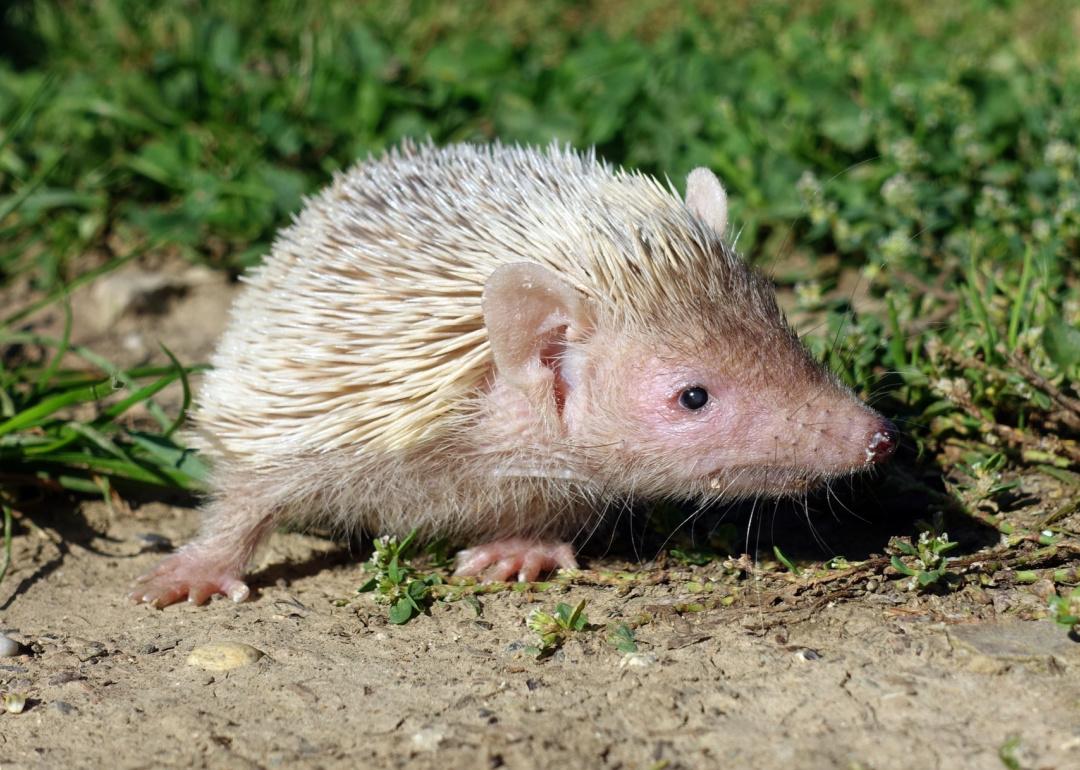
Lesser hedgehog tenrec
- Scientific name: Echinops telfairi
- Mass: 87.50g
- Brain mass: .62g
- About the weight of: 1 half of a pomegranate
The lesser tenrec is endemic to Madagascar. They are distinguished by the tiny spines covering their body, which they use as a defensive mechanism against predators. Although these quills make them look similar to hedgehogs, they are not related.
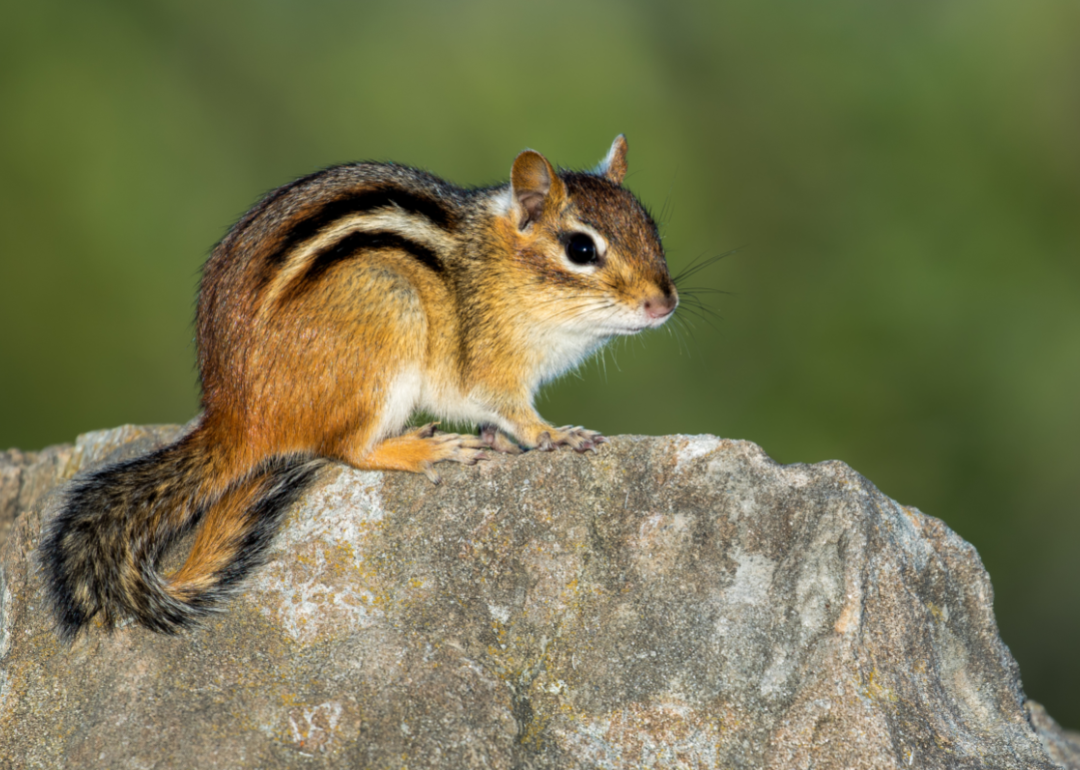
Eastern chipmunk
- Scientific name: Tamias striatus
- Mass: 75.0g
- Brain mass: 1.60g
- About the weight of: 1 chicken egg
The eastern chipmunk is a common sight to those who live anywhere in eastern North America. Their most notable physical features are their cheek pouches of expandable skin, which allow them to carry large amounts of food back to their burrows.
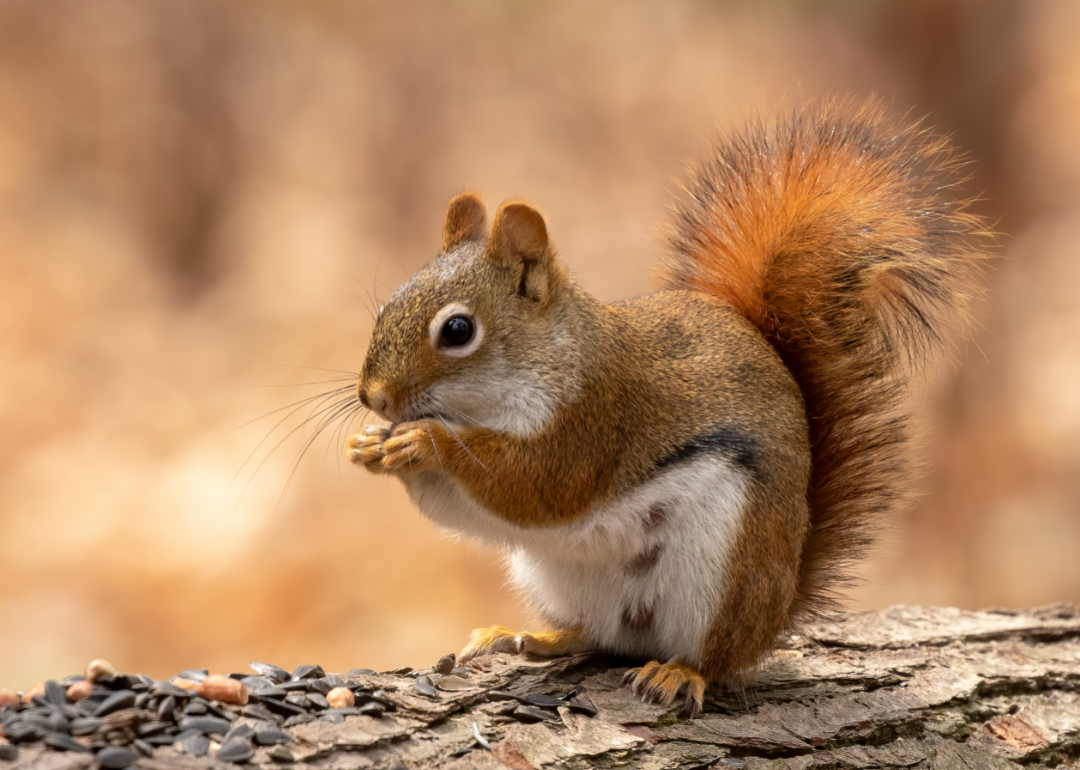
American red squirrel
- Scientific name: Tamiasciurus hudsonicus
- Mass: 63.0g
- Brain mass: 4.09g
- About the weight of: 1 C Battery
American red squirrels tend to look like they just received either an electric shock or the fright of their lives with tufts of ear fur, most prominent during the winter, standing straight up. They are found in conifer forests throughout North America. American red squirrels store caches of food, primarily of seeds, nuts, and fruits. When those caches are abandoned or forgotten, they contribute to important fungal and plant growth.
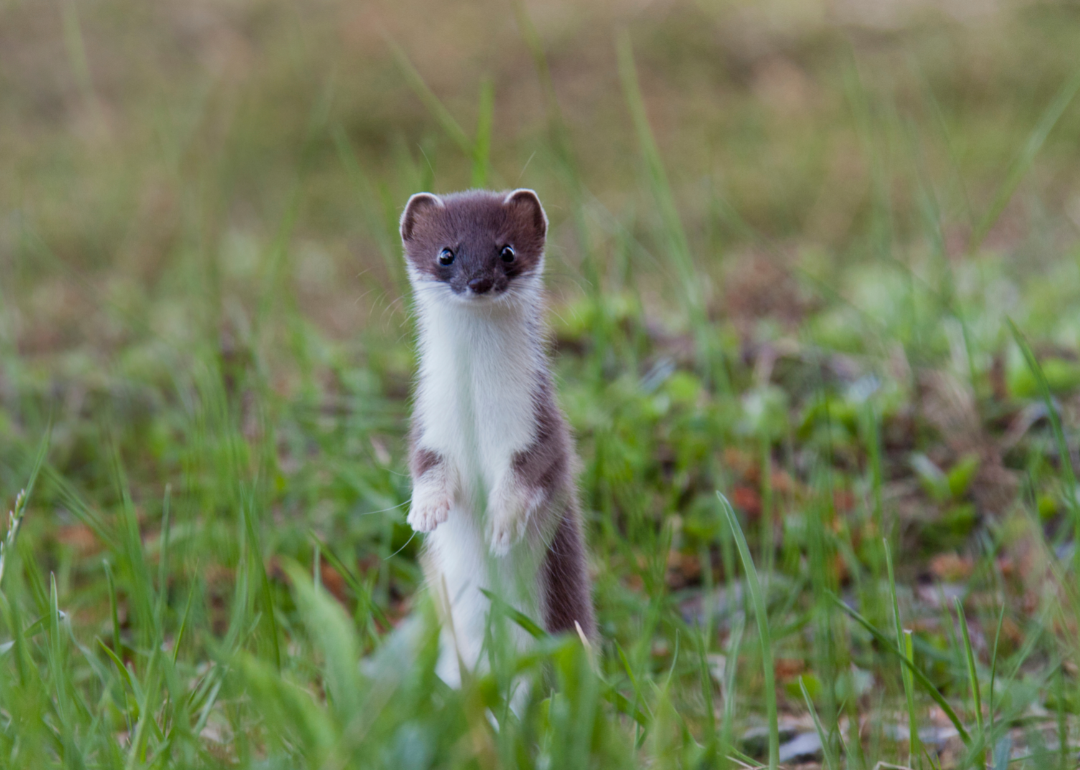
Ermine
- Scientific name: Mustela erminea
- Mass: 41.0g
- Brain mass: Not available
- About the weight of: 1 golf ball
The ermine, also called a stout, is endemic to the temperate regions of North America and Eurasia. They are effective carnivorous hunters both above and below ground, feeding on other small mammals.
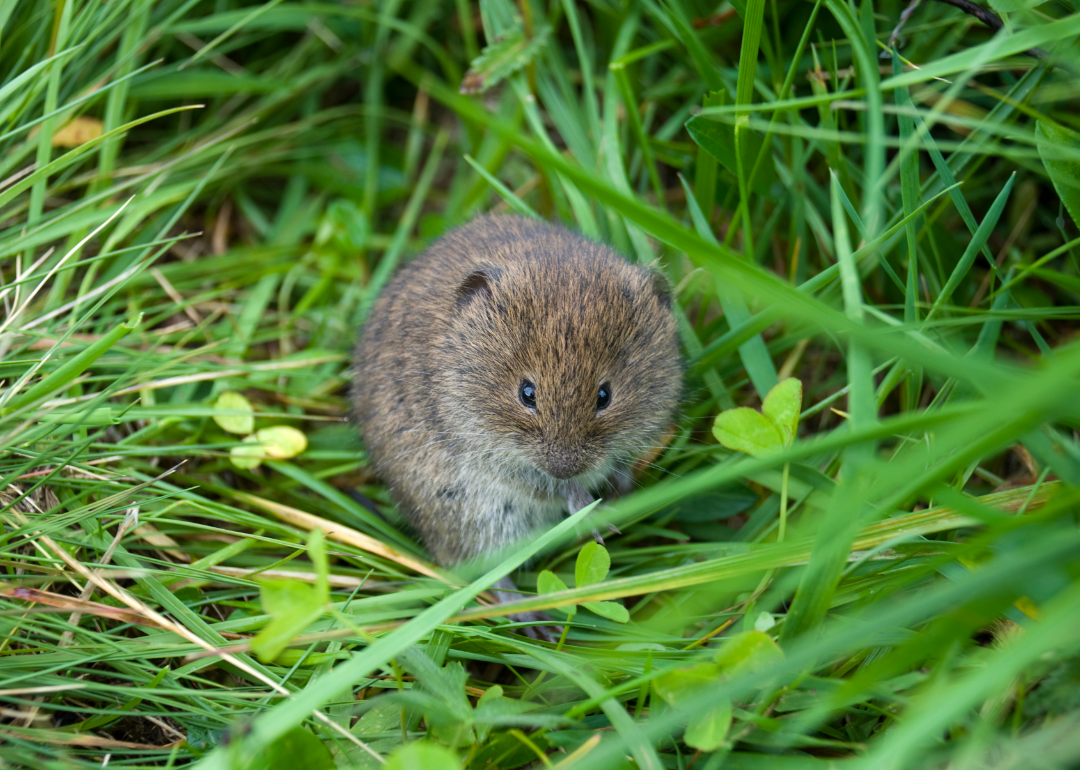
Wood lemming
- Scientific name: Myopus schisticolor
- Mass: 28.20g
- Brain mass: Not available
- About the weight of: 2 chocolate chip cookies
Wood lemmings can be found along the wet moss layer of Nordic coniferous forest floors between Norway and Siberia. They feed primarily on mosses, grasses, stems of red whortleberry, and juniper bark.
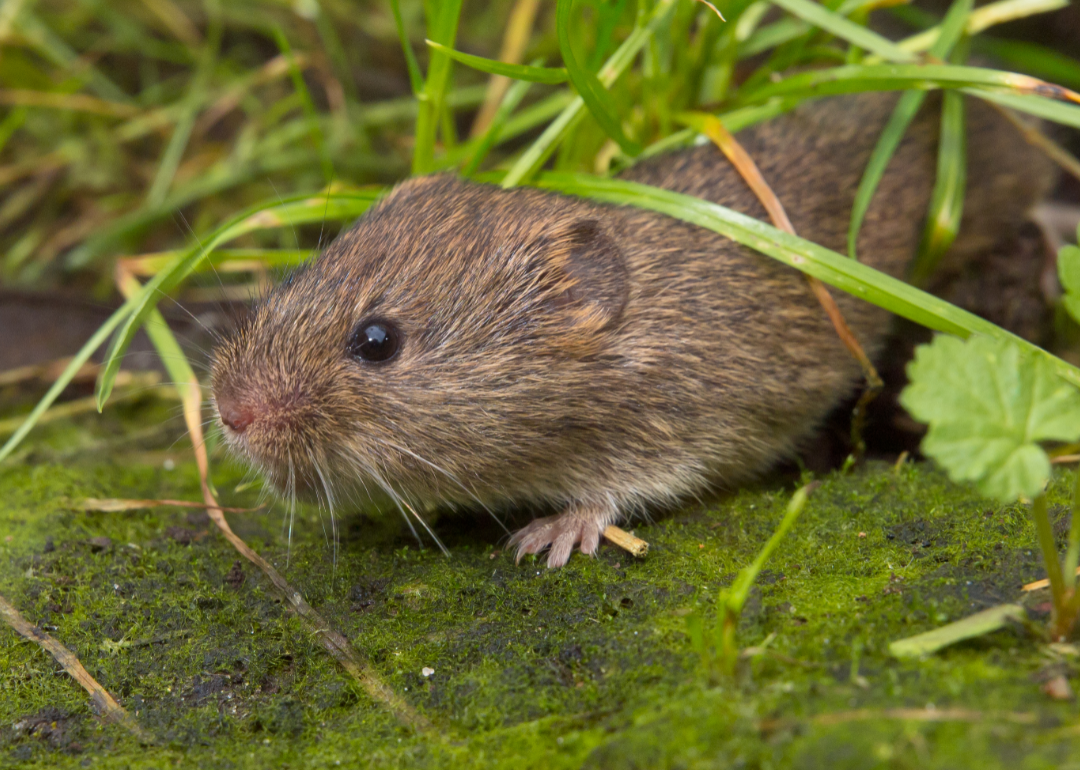
Montane vole
- Scientific name: Microtus montanus
- Mass: 28.10g
- Brain mass: Not available
- About the weight of: 2 compact discs
Montane voles are found primarily in the northwestern United States but have been seen as far north as British Columbia and as far south as Arizona and New Mexico. They occupy grasslands and alpine meadows. These voles move along a well-constructed set of shared runaways, almost like highway systems, and rarely leave them.
The runways provide an escape from predators and opportunities to meet a mate—the equivalent of bumping into someone on the sidewalk and having it be love at first sight.
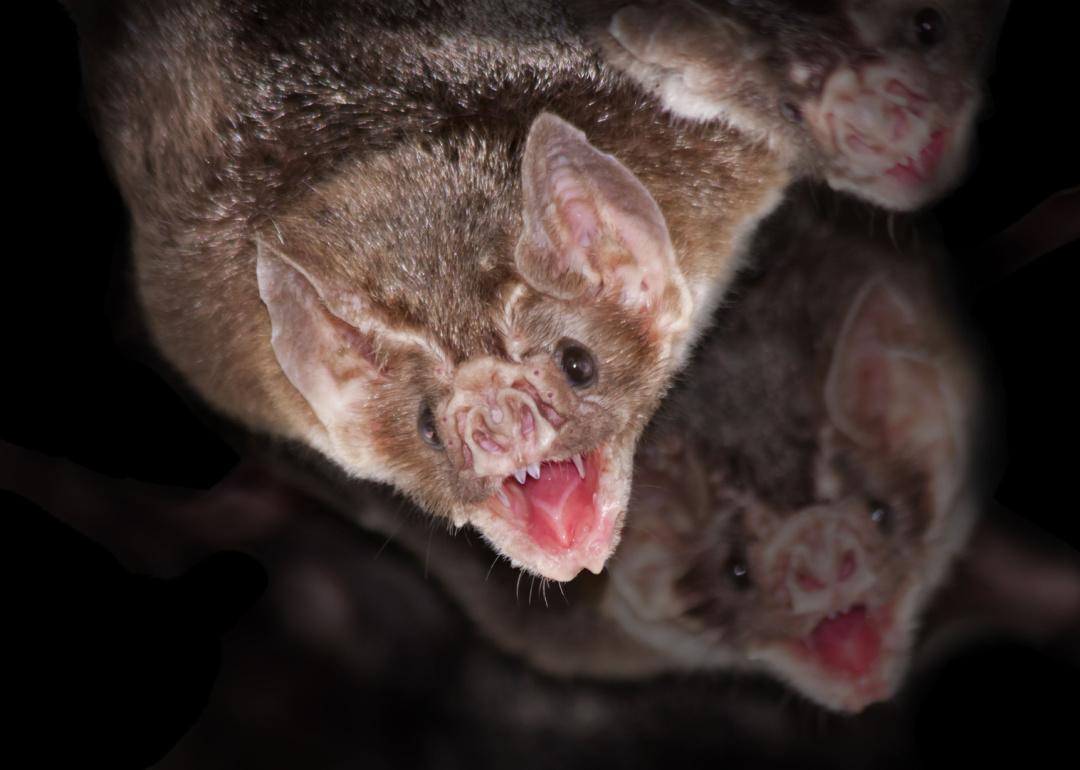
Common vampire bat
- Scientific name: Desmodus rotundus
- Mass: 28.0g
- Brain mass: .94g
- About the weight of: 2 compact discs
The vampire bat is so called because it is the only mammal that feeds exclusively on blood, usually from cattle and horses. Because they are small, they do not consume enough blood to do any damage to the host animals from blood loss. A colony of 100 vampire bats can consume the blood of 25 cows in one year. They are typically found in Mexico and Central and South America.
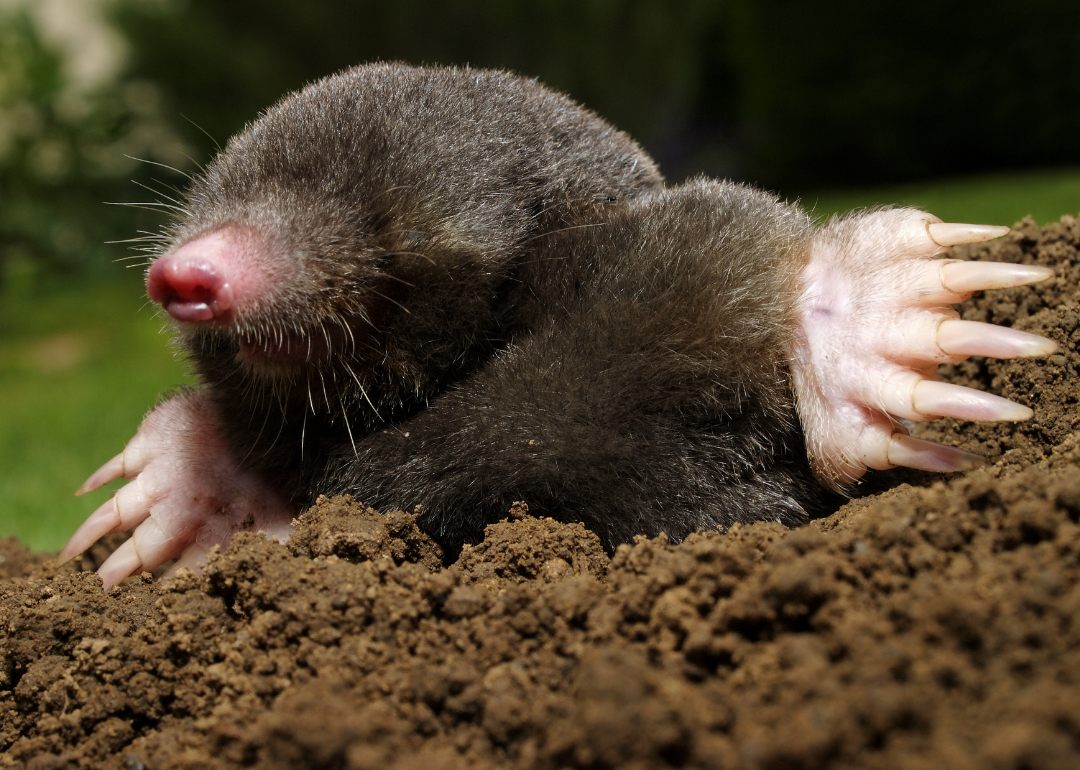
Grant's golden mole
- Scientific name: Eremitalpa granti
- Mass: 20.62g
- Brain mass: Not available
- About the weight of: 4 grapes
The Grant's golden mole occupies a small footprint, found only in southwestern Africa. They thrive in harsh conditions with little vegetation along dunes, sustaining themselves on insects and helping curb the population of pests like termites. They face threats of habitat loss primarily due to diamond mining.
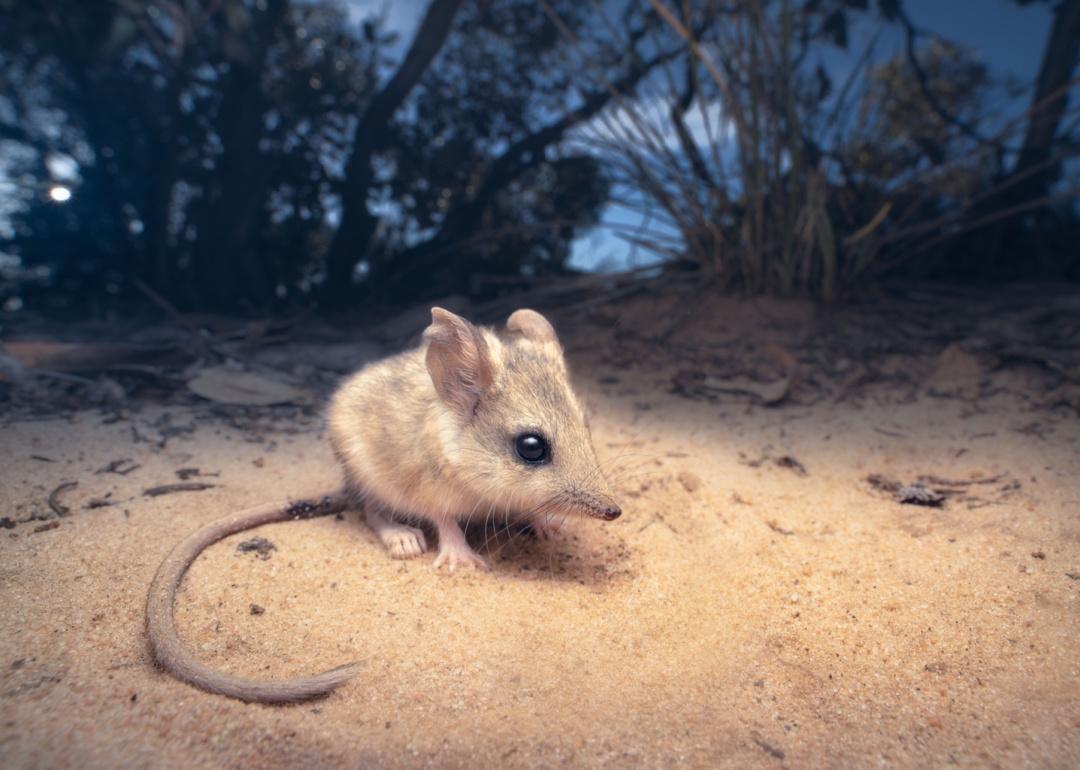
Hairy-footed dunnart
- Scientific name: Sminthopsis hirtipes
- Mass: 9.0g
- Brain mass: .42g
- About the weight of: 1 tablespoon of butter
At first glance, the hairy-footed dunnart's feet don't seem all that hairy—certainly not enough to warrant that as the defining feature of its moniker. But closer inspection reveals the dunnart's soles are covered in silver hair with longer fur protruding from the sides. These mammals look identical to rodents, but they are actually marsupials.
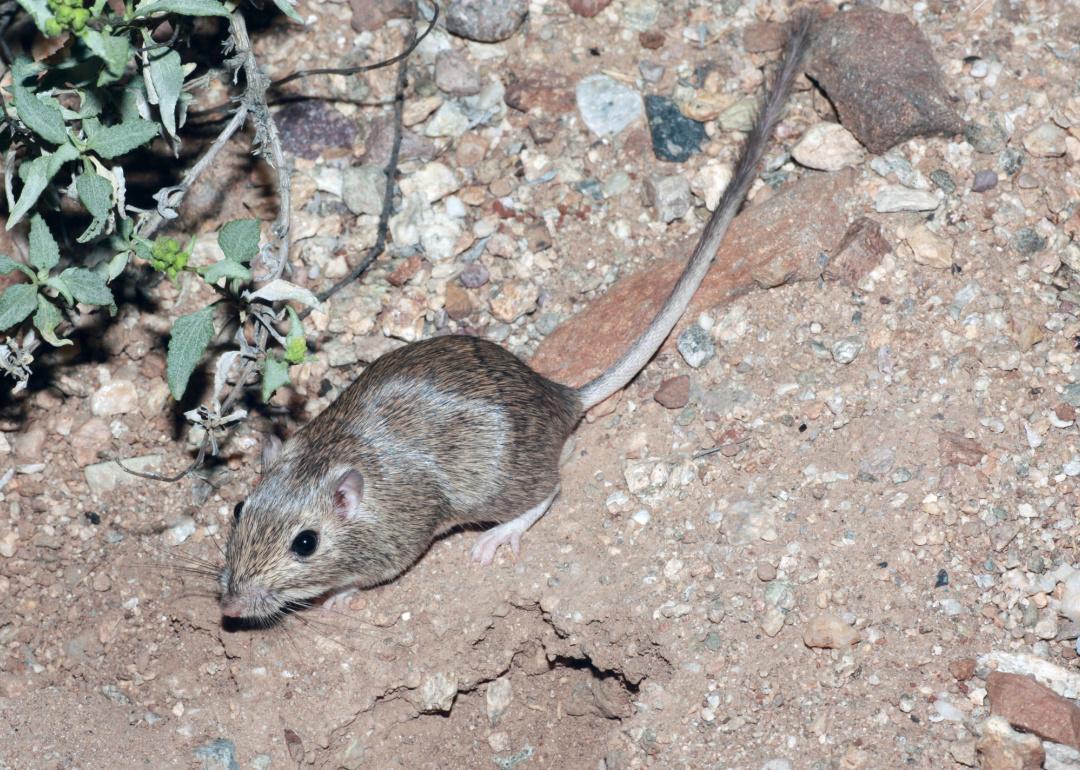
Little pocket mouse
- Scientific name: Perognathus longimembris
- Mass: 8.23g
- Brain mass: Not available
- About the weight of: 8 US dollar bills
No other moniker on this list conveys the idea of small quite as well as "little pocket mouse." This tiny rodent is found throughout the western United States and parts of Mexico. It is dormant during the winter and active between April and November.
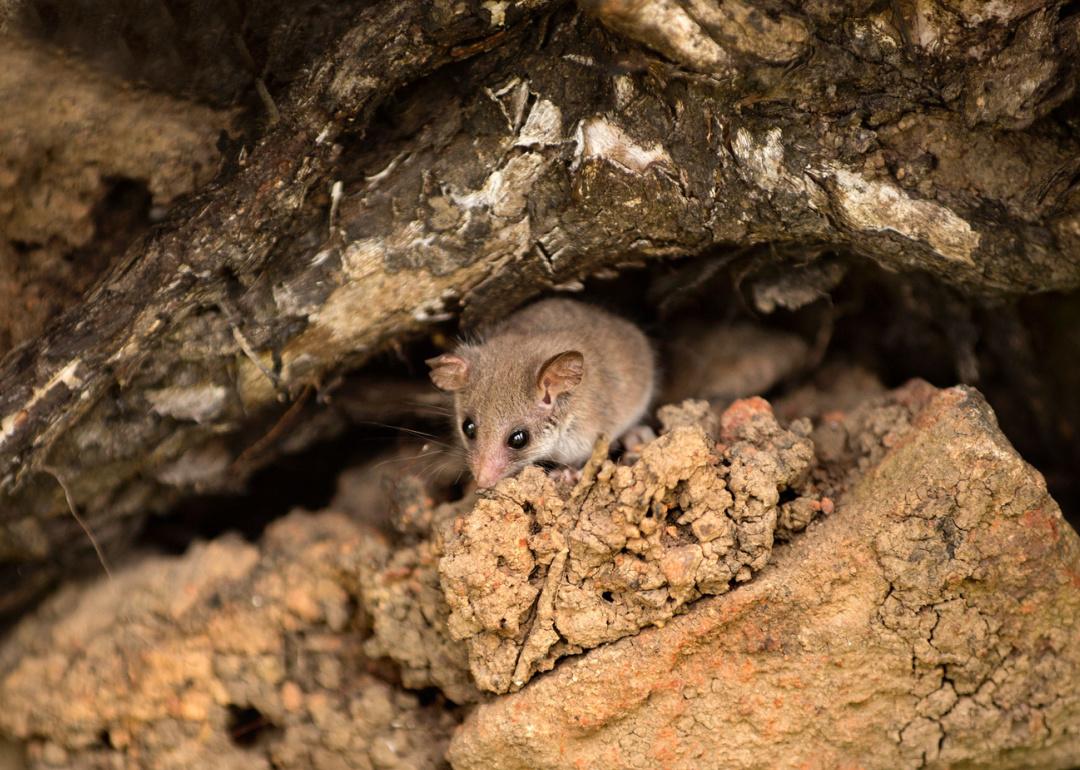
Tasmanian pygmy possum
- Scientific name: Cercartetus lepidus
- Mass: 7.80g
- Brain mass: .37g
- About the weight of: 1 new pencil
The Tasmanian pygmy possum is the world's smallest possum and belongs to the same order as kangaroos and wallabies. They are found in southeastern Australia, including Tasmania. Their small size makes it difficult to maintain a high body temperature when it is cold, so they undergo brief periods of dormancy throughout the year, lasting around six days, to conserve energy.
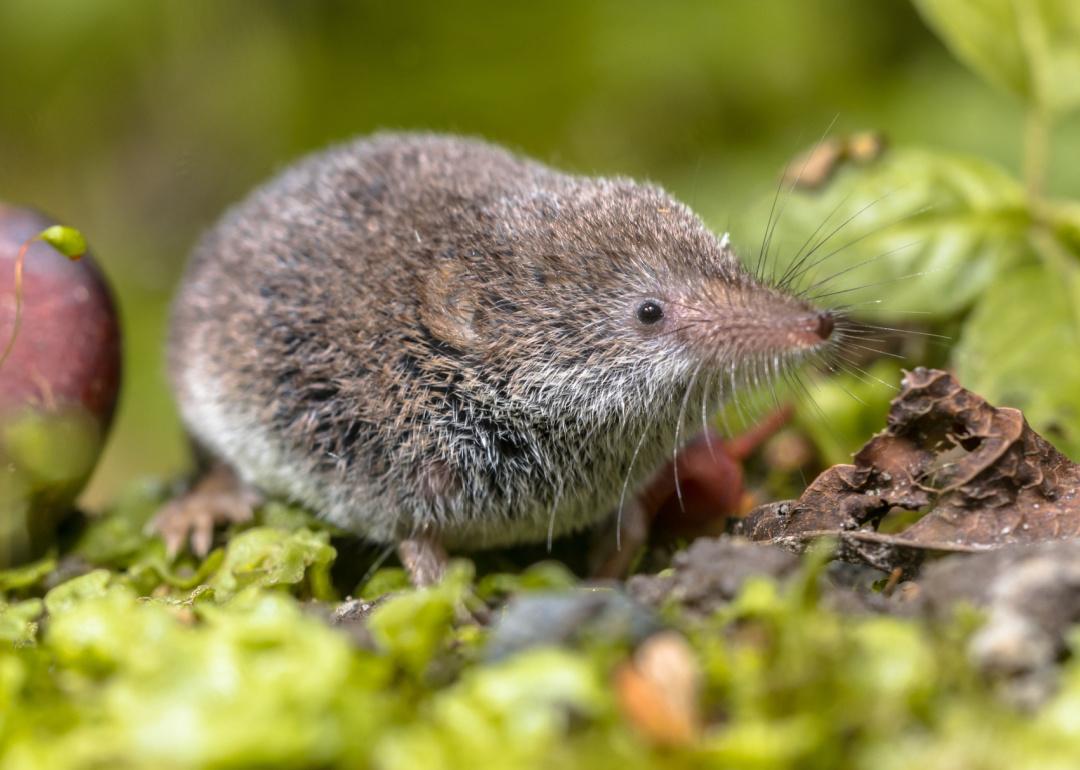
Eurasian pygmy shrew
- Scientific name: Sorex minutus
- Mass: 5.30g
- Brain mass: .10g
- About the weight of: 5 paper clips
The Eurasian pygmy shrew can be found throughout Europe and Asia wherever vegetation is dense. Their high metabolism requires them to consume roughly 125% of their own body weight in insects every day. They have poor eyesight and must rely on hearing and smell for survival. Unlike many other mammals on this list, they do not make burrows.
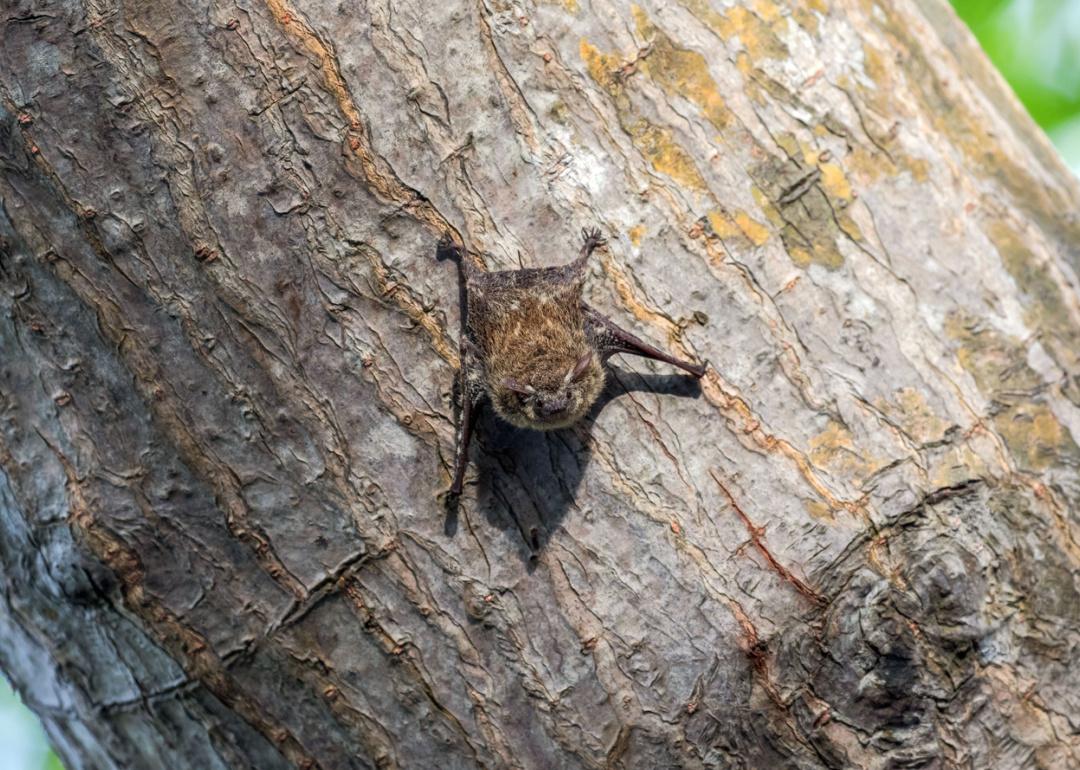
Proboscis bat
- Scientific name: Rhynchonycteris naso
- Mass: 4.30g
- Brain mass: .11g
- About the weight of: 4 sugar packets
Found in southern Mexico, Central America, and the northern part of South America, the proboscis bat is named for its long, pointed nose. These nocturnal hunters feed on insects and use echolocation to find their prey.
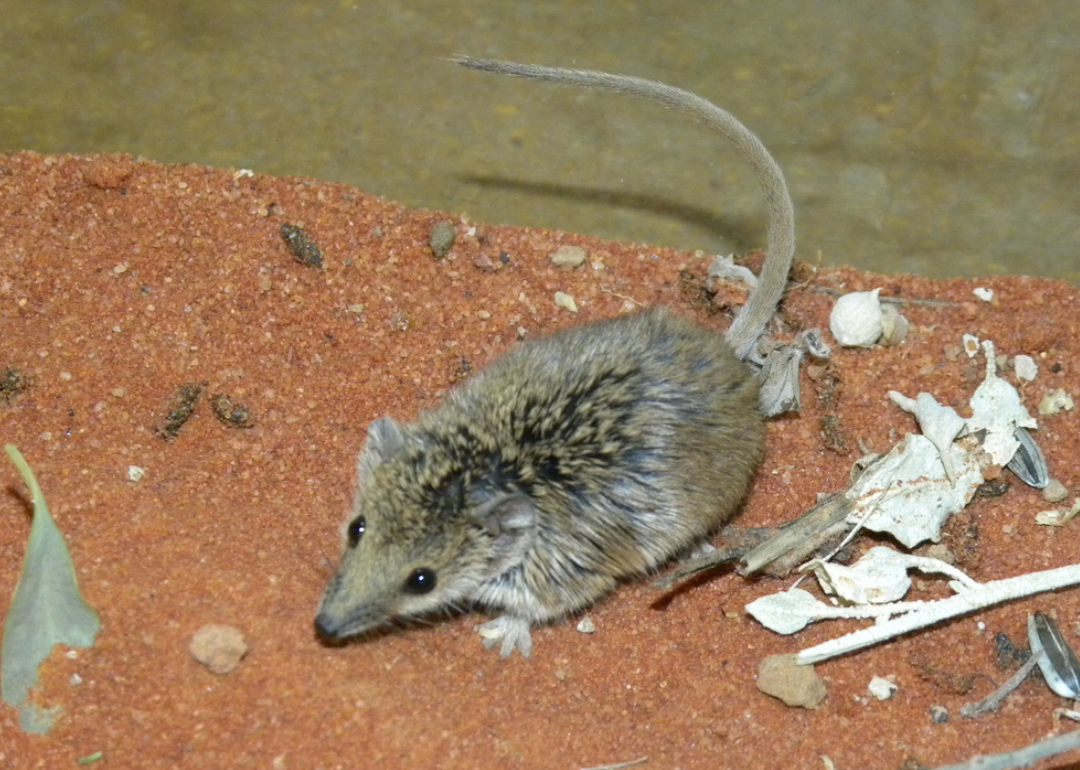
Narrow-nosed planigale
- Scientific name: Planigale tenuirostris
- Mass: 3.90g
- Brain mass: .15g
- About the weight of: 1 dice
The narrow-nosed planigale, found in grasslands and shrublands in southern and central Australia, is one of the world's smallest marsupials. They are active for only short bursts of time, including cycles lasting roughly an hour and a half in the summer and three hours in the winter. When it is not active, it spends its time sheltering below the ground.
